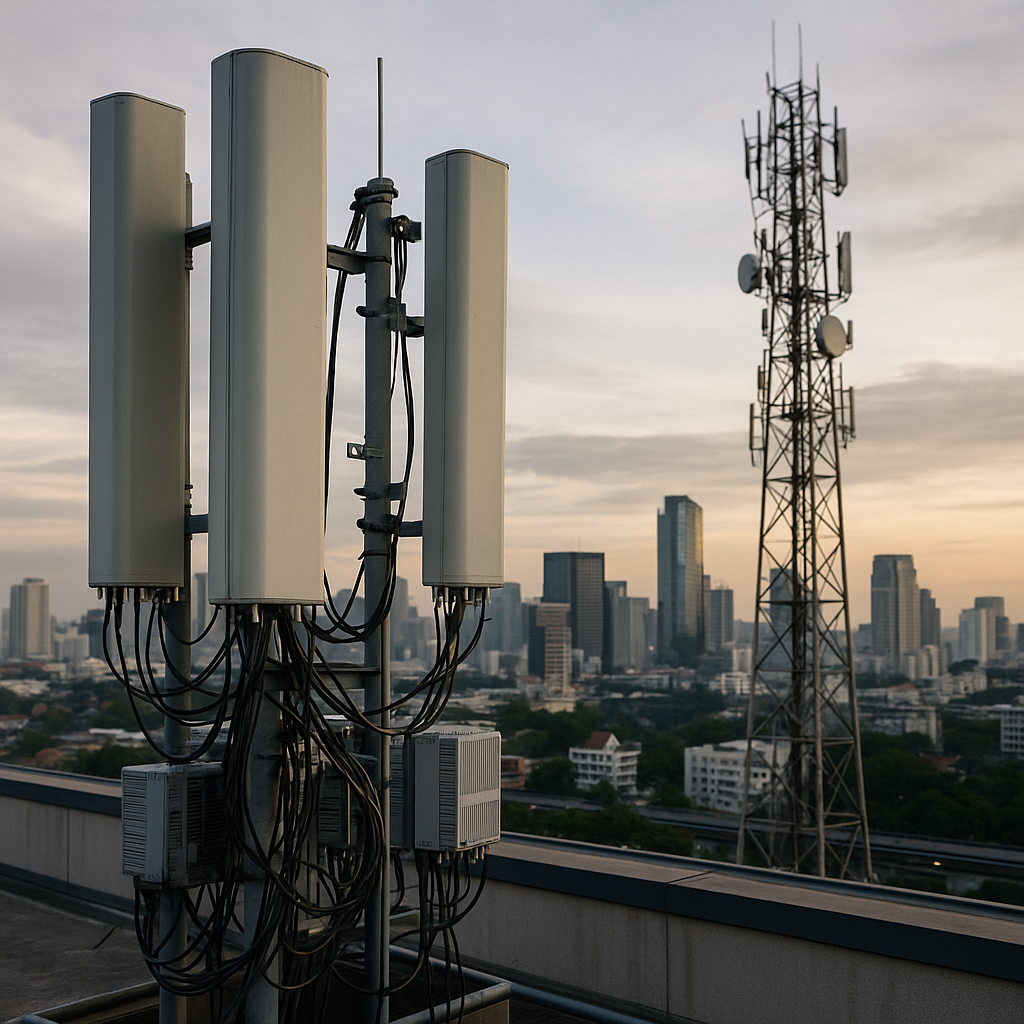New 5G security protocols promise stronger defense against cyber attacks
5G technology underpins critical infrastructures, from smart cities to autonomous vehicles. However, the widely used 5G-AKA protocol, while offering mutual authentication and key secrecy, is still vulnerable to several high-risk attacks. These include active attacks where adversaries manipulate network interactions, and privacy threats such as sequence number inference and encrypted identifier replay.

In the rapidly evolving digital landscape, the security of 5G networks remains a pressing global concern. A team of researchers has developed two enhanced authentication protocols designed to address vulnerabilities that have persisted in 5G infrastructure.
Their paper, “Active Attack Resilience in 5G: A New Take on Authentication and Key Agreement”, examines the flaws of the existing 5G Authentication and Key Agreement (5G-AKA) protocol and proposes solutions that promise improved resilience without requiring major infrastructural changes.
The findings carry significant implications for telecommunication providers, cybersecurity agencies, and the millions of users who rely on 5G connectivity daily. As cyberattacks grow more sophisticated, the research emphasizes the need for protocols that are not only stronger but also practical to deploy at scale.
Why does 5G need a new security approach?
5G technology underpins critical infrastructures, from smart cities to autonomous vehicles. However, the widely used 5G-AKA protocol, while offering mutual authentication and key secrecy, is still vulnerable to several high-risk attacks. These include active attacks where adversaries manipulate network interactions, and privacy threats such as sequence number inference and encrypted identifier replay.
The study highlights three key shortcomings in the current system. First, the reliance on sequence numbers to prevent replay attacks introduces operational complexity and risks desynchronization between network elements. Second, the absence of Perfect Forward Secrecy (PFS) means that if long-term keys are compromised, past session keys can also be exposed, increasing the risk of widespread data breaches. Finally, 5G-AKA’s vulnerability to sophisticated active attacks leaves user privacy inadequately protected.
Addressing these issues requires a careful balance between strengthening security measures and maintaining compatibility with existing hardware and SIM cards. The authors argue that security solutions must be both robust and adaptable to ensure smooth adoption across the global 5G ecosystem.
What solutions do the researchers propose?
To address these challenges, the researchers designed two novel authentication protocols that improve upon the current standard. Protocol I introduces a stateless authentication mechanism that eliminates the dependence on sequence numbers, significantly simplifying operations and preventing replay attacks without increasing overhead. This approach removes a major source of desynchronization and allows networks to operate more efficiently.
Protocol II builds on the first design by incorporating an ephemeral Diffie-Hellman (DH) key exchange. This enhancement ensures Perfect Forward Secrecy, a feature absent in the current 5G-AKA protocol. With PFS in place, even if an attacker gains access to long-term keys, past session keys remain secure, protecting historical communications from exposure.
Both protocols were rigorously tested using the ProVerif tool, a widely recognized framework for verifying cryptographic protocols. The verification results confirmed that the new designs meet all critical requirements for authentication, privacy, and secrecy. Experimental evaluations also showed that the added security comes with only a minor increase in computational costs, making them viable for real-world deployment.
A notable advantage is that neither protocol requires new hardware or SIM cards. This backward compatibility ensures that telecom operators can integrate the improvements into their existing networks without costly upgrades, a factor that greatly increases the feasibility of adoption.
How could these protocols shape the future of 5G security?
The deployment of these enhanced protocols could fundamentally strengthen the security posture of 5G networks worldwide. By addressing both active and passive attack vectors, they mitigate risks that have long threatened user privacy and network stability. Furthermore, the incorporation of PFS in Protocol II ensures that sensitive historical data remains protected, even if future vulnerabilities are discovered.
For network operators, the protocols offer a pathway to improving security without disrupting current services. This is especially important as 5G networks expand rapidly and begin supporting mission-critical applications, where security breaches could have severe societal and economic consequences.
The study also signals to policymakers and cybersecurity regulators that evolving standards must keep pace with technological advancements. As attackers adopt increasingly complex tactics, defensive measures need to be equally adaptive. The proposed protocols align with 3GPP TS 33.501 security specifications, reinforcing their relevance for industry-wide adoption.
To sum up, securing 5G requires more than patching existing flaws. It demands a shift toward proactive, forward-looking solutions that anticipate emerging threats.
- FIRST PUBLISHED IN:
- Devdiscourse










